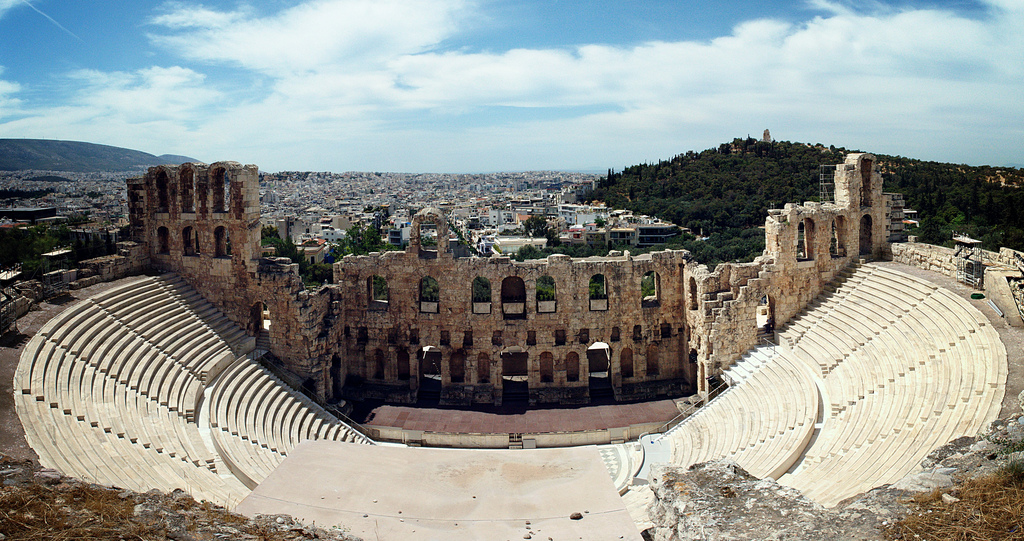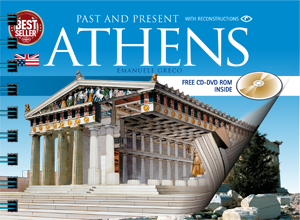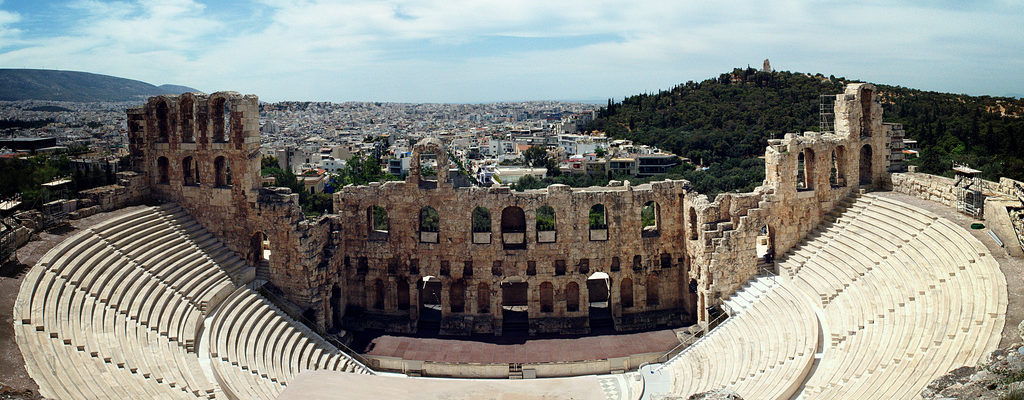The Odeon of Herodes Atticus is a stone theatre structure that hosted music events, located on the southwest slope of the Acropolis of Athens.
On the rocky wall of the Acropolis, behind the theater of Dionysus, runs an ancient road known as the peripatos, which flanks the southern and eastern sides of the Acropolis.
Proceeding west there is the Stoa of Eumenes: this is a portico a little under a hundred and seventy metres long commissioned by Eumenes II King of Pergamon, who reigned in the first half of the IInd century BC.
The portico was on two storeys, it facade consisting of a colonnade of 64 Doric columns, and it was divided into two aisles by a colonnade of 31 columns, Ionic on the ground floor and Pergamene on the upper one.
According to Vitruvius (the Roman author of a history of architecture written in the late Republican period), the building served as a shelter for the theater audience in case of bad weather, and connected the Theatre of Dionysus with the Odeon of Herodes Atticus.
The Odeon was commissioned a little after the middle of the IInd century AD by the very wealthy Athenian citizen Herodes Atticus, as a gift to the city.

Photo credits by George Ruiz, under CC-BY-2.0.
With a capacity for an audience of five thousand, it has now been completely restored, and it is still used for concerts and theater productions.
It had a semicircular cavea in marble from Mount Hymettos, divided into two sectors by a diazoma (walkway).
The orchestra features paving in coloured marble; the stage building was almost 30 metres high, and its facade, which is organized on three levels, was decorated with columns and niches for statues.
It was covered by a roof with beams of Lebanese cedar.

Do you want to know more about the Odeon of Herodes Atticus, the Acropolis and the history of Athens?
Check out our guidebook to Athens, with detailed history and Past & Present images of the Acropolis, the Parthenon, the Propylaea and all the greatest historical and archaeological sites of the greek city.

